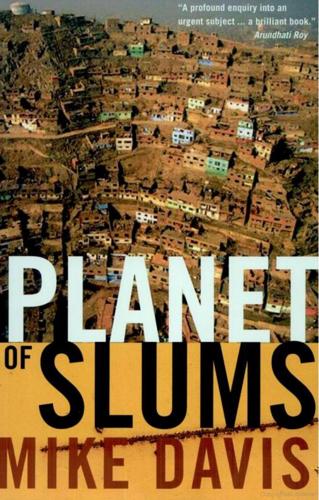
Planet of Slums
by
Mike Davis
Published 1 Mar 2006
Patrick Geddes1 1 Quoted in Lewis Mumford, The City in History: Its Origins, Its Transformations, and Its Prospeds, New York 1961, p. 464. Contents 1. The Urban Climacteric 1 2. The Prevalence of Slums 20 3. The Treason of the State 50 4. Illusions of Self-Help 70 5. Haussmann in the Tropics 95 6. Slum Ecology 121 .7. SAPing the Third World 151 •8. A Surplus Humanity? 174 Epilogue: Down Vietnam Street 199 Acknowledgments 207 Index 209 The Urban Climacteric We live in the age of the city. The city is everything to us — it consumes us, and for that reason we glorify it. Onookome Okome1 Sometime in the next year or two, a woman will give birth in the Lagos slum of Ajegunle, a young man will flee his village in west Java for the bright lights of Jakarta, or a farmer will move his impoverished family into one of Lima's innumerable pueblos jovenes.
…
Thus the granite, steel and tinted glass offices in Bangalore, most of them belonging to software companies, pose a stark contrast to ill-maintained factories facing falling orders and tighter credit conditions."74 Ruefully, a leading Western economic consultant was forced to concede that "Bangalore's high tech [boom] is a drop in the bucket in a sea of poverty."75 74 Benjamin, "Governance, Economic Settings and Poverty in Bangalore," pp. 36-39. 75 William Lewis quoted in Bernard Wysocki, "Symbol Over Substance," Wall Street Journal, 25 September 2000 A Surplus Humanity? A proletariat without factories, workshops, and work, and without bosses, in the muddle of the odd jobs, drowning in survival and leading an existence like a path through embers. Patrick Chamoiseai} The brutal tectonics of neoliberal globalization since 1978 are analogous to the catastrophic processes that shaped a "Third World" in the first place, during the era of late-Victorian imperialism (1870-1900).
…
The chief partners in Africa's underdevelopment, the IMF and World Bank, repeated the same pessimistic assessment in their Global Monitoring Report issued in April 2005.4 With a literal "great wall" of high-tech border enforcement blocking large-scale migration to the rich countries, only the slum remains as a 4 Human Development Report 2004, pp. 132—33; Tanya Nolan, "Urgent Action Needed to Meet Millennium Goals," ABC Online, 13 April 2005. fully franchised solution to the problem of warehousing this century's surplus humanity. Slum populations, according to UN-HABITAT, are currently growing by a staggering 25 million per year.5 Moreover, as emphasized in an earlier chapter, the frontier of safe, squattable land is everywhere disappearing and new arrivals to the urban margin confront an existential condition that can only be described as "marginality within marginality" or, in the more piquant phrase of a desperate Baghdad slum-dweller, a "semi-death."6 Indeed, peri-urban poverty — a grim human world largely cut off from the subsistence solidarities of the countryside as well as disconnected from the cultural and political life of the traditional city — is the radical new face of inequality.
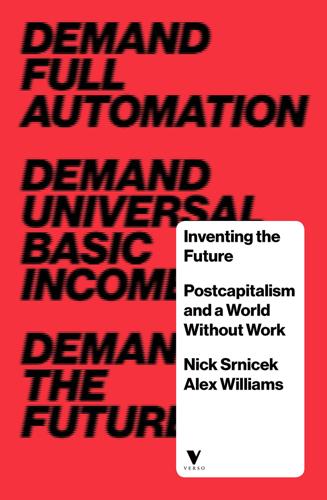
Inventing the Future: Postcapitalism and a World Without Work
by
Nick Srnicek
and
Alex Williams
Published 1 Oct 2015
This includes the reservoir of proto-proletarians (including peasants), but this group also includes unwaged domestic labourers, as well as salaried professionals who are under threat of being returned to the proletariat, often through deskilling (for example, medical professionals, lawyers and academics).41 The importance of this group is that it forms an additional reservoir of labour for capitalism when existing labour markets are tight.42 Finally, in addition to the other strata, a vast number of people are considered economically inactive (including the discouraged, the disabled and students).43 Overall, determining the precise size and nature of the global surplus population is difficult with existing data, and subject to fluctuations as individuals move in and out of categories, but a variety of measures converge to suggest it significantly outnumbers the active working class.44 This is the crisis of work that capitalism faces in the coming years and decades: a lack of formal or decent jobs for the growing numbers of the proletarian population. In an earlier generation, the identification of surplus populations as a problem was an idea that was often derided. During the ‘golden age’ of capitalism, low unemployment, stable jobs, rising wages and rising living standards meant the idea that capitalism produced a surplus humanity enjoyed little material support. Yet, while most leftist thinkers turned to the economic problems of growth for capitalism, an occluded intellectual tradition has instead emphasised the social reproduction problem of surplus populations. It is no surprise that it was often those outside the functioning capitalist order who saw the potential in this surplus class.45 Writing from Algiers in the 1970s, Eldridge Cleaver presciently argued that ‘When workers become permanently unemployed, displaced by the streamlining of production, they revert back to their basic [proletarian] condition’ and that ‘the real revolutionary element of our era is the [proletariat]’.46 From the capitalist core, Paul Mattick called it ‘the most important of all capitalistic contradictions’.47 And more recently, communisation theorists have made important contributions to analysing the crisis of wage labour, and Fredric Jameson has argued that Capital ‘is not a book about politics, and not even a book about labour: it is a book about unemployment’.48 Indeed, it is often forgotten that Marx argued that the expulsion of surplus populations was part of ‘the absolute general law of capitalist accumulation’.49 In the wake of the 2008 crisis and continued sluggishness in the labour market, it is no surprise that the issue of surplus populations should emerge again.
…
It is no surprise that it was often those outside the functioning capitalist order who saw the potential in this surplus class.45 Writing from Algiers in the 1970s, Eldridge Cleaver presciently argued that ‘When workers become permanently unemployed, displaced by the streamlining of production, they revert back to their basic [proletarian] condition’ and that ‘the real revolutionary element of our era is the [proletariat]’.46 From the capitalist core, Paul Mattick called it ‘the most important of all capitalistic contradictions’.47 And more recently, communisation theorists have made important contributions to analysing the crisis of wage labour, and Fredric Jameson has argued that Capital ‘is not a book about politics, and not even a book about labour: it is a book about unemployment’.48 Indeed, it is often forgotten that Marx argued that the expulsion of surplus populations was part of ‘the absolute general law of capitalist accumulation’.49 In the wake of the 2008 crisis and continued sluggishness in the labour market, it is no surprise that the issue of surplus populations should emerge again. With technological change proceeding apace, the already large numbers of surplus humanity look set to swell. The very social basis of capitalism as an economic system – the relationship between the proletariat and employers, with waged work mediating between them – is crumbling. THE MISERY OF NOT BEING EXPLOITED As we have seen, very little of the global labour force is employed in formal wage labour, and this number has only decreased in the wake of the 2008 crisis.
…
Rather than a scarcity of labour, recent industrialisation has occurred in the context of a large and global labour force.100 The result has been little development of anything resembling a traditional working class, continually weak job prospects and a lack of adequate housing.101 New urban migrants have been left in a permanent state of transition between peasantry and proletarianisation, and sometimes in seasonal circulation between rural existence and urban poverty.102 Slums and other improvised housing therefore represent a dual expulsion from the land and from the formal economy.103 This surplus humanity, having been deprived of its traditional means of subsistence yet left without employment, has been forced to create its own non-capitalist subsistence economies. Much of the labour performed here is informal: low-paid, insecure, irregular and without state support. In these economies, production is typically organised in non-capitalist forms but remains directed towards commodity production – to selling goods on the market, rather than for individual use.

Cities Under Siege: The New Military Urbanism
by
Stephen Graham
Published 30 Oct 2009
It underpins a highly technocratic and technophilic discussion centred on what Ashley Dawson refers to as ‘the increasing prominence of urban combat zones’ combined with a complete inability ‘to acknowledge the underlying economic and political forces that are driving urbanization in the megacities of the global South.’148 In failing to address the root causes of the extreme polarization and violence generated by neoliberalization and the massive growth of informal settlements, urban military discourse simply echoes the catastrophic failure of the world’s political and economic élites to ‘question how to integrate the surplus humanity of the global South into the global economy’. Fantasies harboured by US military theorists of controlling the world’s burgeoning cities and settlements are probably best interpreted as what Dawson calls ‘an index of the waning hegemony of US imperial power rather than a sign of the empire’s invincible might’.149 In 2009, as one witnesses the rapidly waning power of the US economy, reeling under the current financial crash, one is hard pressed to disagree.
…
Even these totals were expected to grow significantly.88 Brady Thomas Heiner argues that the construction of such a transnational US war prison has the effect of clearing the path for American capital investment abroad and neutralizing the resistance waged in other lands against evolving US colonial governance.89 Indeed, Amy Kaplan, in response to the revelations of systematic torture at Abu Ghraib and Guantánamo Bay, foresees a future dominated by a normalized ‘floating colony’ where homeland security ‘will increasingly depend on proliferating these mobile, ambiguous spaces between the domestic and the foreign’.90 Meanwhile, in the expanding cities of the global South, securocratic warfare is often being launched against informal settlements, which are commonly demolished, erased, or surrounded by militarized borders because of the threat they seem to pose to the body politic, or to public health, or to achieving the city’s goal of being regarded as global, high-tech, modern or attractive to the wider world.91 As Loïc Wacquant points out, regarding state violence against the favelas of Rio or São Paulo, many states are resorting to a strategy of ‘punitive containment’ towards informal cities – ‘the management of dispossessed and dishonored populations in the polarizing city in the age of triumphant neoliberalism’.92 To Wacquant, Brazilian cities, especially, serve as a ‘historical revelator of the full consequences of the penal disposal of the human detritus of a society swamped by social and physical insecurity.’ He argues that as ‘proving grounds’ for the neoliberal state, moreover, Brazil’s favelas, African-American ghettos, the French banlieues, and other sites for the disposal or warehousing of capitalism’s surplus humanity are the places where exemplars for securocratic warfare are ‘concretely being assembled, tried, and tested’.93 Naomi Klein has argued that Israel’s experiments in incarcerating the entire population of Gaza and the West Bank serve a similar role.94 In the Indian city of Chandigarh as well, residents of the slums must now ‘furnish details of their fingerprints, photographs, face recognition, voice recognition, signature, shape of the hand’ for a biometric ID system which will not cover the rest of the city’s population.95 In extreme cases, paramilitary forces mobilized for internal securocratic wars attempt to impose new internal biopolitical borders based on denying racialized minorities the rights of citizenship or international humanitarian law.96 The resulting intraterritorial states of exception are exemplified by a lengthening list of examples, of which the systematic ignoring of New Orleans’ poor, disposable African-Americans in 2005 is perhaps the most startling.97 The crack-down on residents of Paris’s banlieues entering central Paris since the major 2005 riots is another telling example, marked by a widespread discourse of ‘barbarians’ now being within the gates, not just of the city, but of the iconic city of Western modernity.98 A third relevant example is the use of Israeli-style shoot-to-kill tactics to enforce the new internal border politics, which resulted in the killing of Jean Charles de Menezes in a London tube station on 22 July 2005.99 Finally, within Italy, the mobilization, registration, and attempted erasure of Gypsy and Romany individuals and their camps by the post-2008 Berlusconi government reveal the risk of neo-fascist takeovers in liberal democracies in the early twenty-first century.100 FACES OF TERROR In practices that mimic the techniques of urban counterinsurgency on the streets of Baghdad, entire city districts and infrastructure systems are now subject to remote, visual electronic scrutiny.
…
Index Page numbers in italics indicate images ABC, 72 Abu Ghraib, 57, 72, 109, 110 n.81, 112, 235, 352 Abu Manneh, Bashir, 230–31 Achcar, Gilbert, 39, 372 Ackerman, Robert, 164 Ackerman, Spencer, 129 n.143 Aegis air-defence, 181 Afflicted Powers: Capital and Spectacle in a New Age of War, 69 n.28, 162 n.27, 211 n.91, 302 n.4, 338 n.150, 349 n.3, 381 n.89, 385 n.98 Afghanistan, 54, 73, 129, 170, 178, 195, 239–40, 252, 270, 273, 359, 371, 379; simulated, 196, 216 Africa, 2, 7, 17, 53 n.74, 54, 119, 176, 297, 311, 334, 337 African Americans: and Hummer, 321; and Hurricane Katrina, 25, 48 n.57, 52, 86 n.107, 94–95, 113; media portrayal of, 44–45; military target & employee, 62, 321; and prison, 110; surplus humanity, 113 Agamben, Giorgio, xxii n.19, xxv, 73, 94 n.31, 96 n.38, 113 n.96, 175 n.76, 235, 296 n.130, 300, 307 Agier, Michel, 18 n.72 Agre, Phil, 24 n.102, 31 n.130, 117, 263 n.2, 293–96, 298–300 Ahtisaari, Martti, 281 Air Force Magazine, 172 airport security, 136–38 Air and Space Power Chronicles, 275 Aizenman, N.

Squeezed: Why Our Families Can't Afford America
by
Alissa Quart
Published 25 Jun 2018
Finally, a 2015 study by Ball State University showed that while trade accounted for 13 percent of lost U.S. factory jobs, robots and new technologies were the often-hidden thieves of the nearly 88 percent of the remaining lost jobs. Some high-end economists who study employment trends believe that “nonroutine cognitive tasks” will be computerized out of existence; indeed, people like Karl Fogel, a partner at Open Tech Strategies, have been known to use the hideous phrase “surplus humans.” Bank associates are being replaced by online banking, and movie attendants by computerized robot ushers. A recent report by a market research company asserts that by 2021 robots will have eliminated 6 percent of all jobs now performed by American humans, and a fair share of them are middle-class jobs, like the work of pharmacists or a certain cast of lawyers.
…
See Education School zones, 135, 136 Schroeder, Matthew, 91 Schwartz, Pepper, 212 Scott-Heron, Gil, 216 Second Act Coaching, 170 Second act industry, 165–88 career navigators, 165–68, 186–87 concept of failure, 179–81 for-profit colleges, 172–78 illusory faith in second acts, 170–79 Michelle Belmont’s story, 184–86 RE:Launch, 165–68, 186–88 remedies, 183–88 sales pitch of, 181–83 use of term, 170 Self-blame, 4, 37, 47, 182, 211, 249–50, 258–59 Self-help books, 181 Self-help mantras, 4 Self-image, 4, 8–9 Service Employees International Union (SEIU), 54, 58 Shame, 155, 214 Sharone, Ofer, 169, 172–73 Sherman, Rachel, 213 Shulevitz, Judith, 244 Silicon Valley, 89–90, 91 housing costs, 147–48, 149, 197 Uber teacher-drivers, 147–50, 160 Silicon Valley (TV show), 222, 223 Simiyu, Esther, 117–18, 120, 145 Sister Carrie (Dreiser), 180 Soccer, 131, 142 Social class, 109, 263–65 men and, 150–51 school curricula about, 263–65 Social class segregation, 8, 114, 197 Social comparision theory, 90–91, 93–94 Social media, 214–16 Social mobility, 49–50, 112–13, 154 of immigrants, 112–13, 121–24, 139 Social Security, 241, 278 Social status, 4, 90–94 health outcomes and, 93–94, 96 income and happiness, 90–91, 93–94 Sopranos, The (TV show), 217 Soul, 40 South Africa, hospital birth costs, 24 “Spatial inequality,” 197 Spencer, Tamara, 166, 173–74 Spielberg, Steven, 230–31 “Spoiled identities,” 28 Squeezed, use of term, 4 “Standard of living,” 69–70 Standing, Guy, 6 Stanford University, 16, 252 Stapleton, Ainsley, 98–99 STEM (Science, Technology, Engineering and Mathematics), 47–48 Stepford Wives, The (Levin), 102–3 Stocksy, 158 Student debt, 168–69 Belle Goldman’s story, 183–84 of law school graduates, 37–38, 102, 103, 105 Michelle Belmont’s story, 1–2, 100, 185–86 racial differences in, 176–77 remedies, 183–86 Tamara Spencer’s story, 173 “Stupid optimism,” 39 Suárez-Orozco, Carola, 143 Suárez-Orozco, Marcelo, 143 Subsidized day care, 79–80, 253–54 Success Kidz 24 Hour Enrichment Center, 64 Sugarland Express, The (film), 230–31 Summer camps, 98 Summers, Larry, 139 Supplemental Nutrition Assistance Program (SNAP). See Food stamps Supplemental Security Income (SSI), 44 “Surplus humans,” 228 Sweden child allowance, 253 parental leave, 25 Swift, Jonathan, 162 Szuflita, Joyce, 134–36, 137–38 Tanner, Shaun, 89–90, 93, 109 Target, 69 TaskRabbit, 158, 159, 162 Tax policy, 79–80, 83, 241, 253 Teacher fathers, 147–63 John Koopman’s story, 153–55 Matt Barry’s story, 59–160, 162–63 platform cooperativism, 157–60 “precarious manhood” theory, 150–51 remedies, 156–63 Teacher pay, 151–53, 259 adjunct faculty, 34, 36–37, 41, 54 Technical education, 47–48 Television.
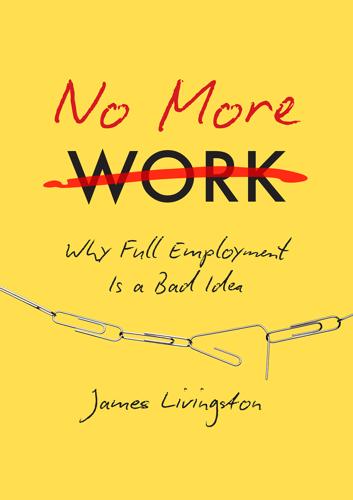
No More Work: Why Full Employment Is a Bad Idea
by
James Livingston
Published 15 Feb 2016
Oxford economists who study employment trends tell us that fully two-thirds of existing jobs, including those involving “non-routine cognitive tasks”—you know, like thinking—are at risk of death by computerization within twenty years. They’re elaborating on conclusions reached by two MIT economists in a book from 2012 called Race against the Machine. Meanwhile, the Silicon Valley types who give TED talks have started speaking of “surplus humans” as a result of the same process—cybernated production. Rise of the Robots, the title of a new book that cites these very sources, is social science, not science fiction.1 So this Great Recession of ours is a moral crisis as well as an economic catastrophe. You might even say it’s a spiritual impasse, because it makes us ask what social scaffolding other than work will permit the construction of character—or whether character itself is something we must aspire to.
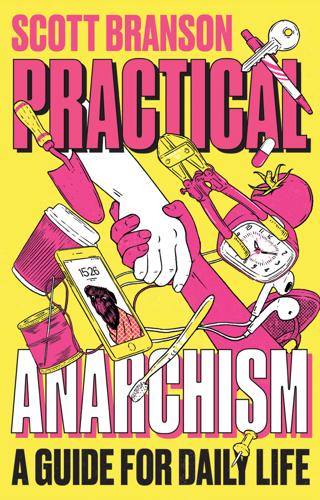
Practical Anarchism: A Guide for Daily Life
by
Scott. Branson
Published 14 Jun 2022
However, according to ex-prisoner Farid Ben Rhadi, “[p] rison only exists to make those on the outside believe they are free.” Similarly, urban areas spilling over into slums is like a return of the repressed: the fact that you can’t actually dispose of whole populations. This production of “surplus humanity” is part of the massive dispossession that Mike Davis writes about in Planet of Slums, where neighborhoods overflow and informal economies arise, alongside the booming prison population. Our systems produce waste and that waste doesn’t actually disappear. In every city, we see the police and businesses wage war against unhoused people, trying to wish away the inequalities of property by evicting encampments.
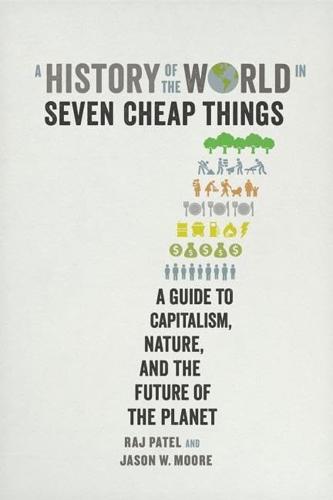
A History of the World in Seven Cheap Things: A Guide to Capitalism, Nature, and the Future of the Planet
by
Raj Patel
and
Jason W. Moore
Published 16 Oct 2017
This happens for all sorts of reasons. Workers organize and struggle, and as capitalism develops, it stamps out alternative sources of income and care. And if wageworkers in this expanded sense bear the costs—often horrifically, in the case of the billion-plus informal workers whom Mike Davis calls “surplus humanity”12—so too must capitalists. Every act of producing surplus value depends on a greater act of appropriating human and extrahuman life beyond the cash nexus. This logic was applied to workers not just in the New World but also, increasingly, in Europe. The unfolding of this logic and the strategies and counterstrategies of cheap work are the subjects of this chapter.
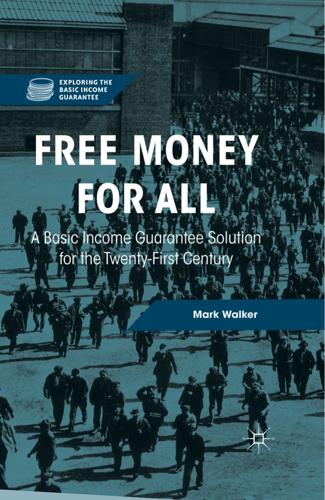
Free Money for All: A Basic Income Guarantee Solution for the Twenty-First Century
by
Mark Walker
Published 29 Nov 2015
With the First Great Transformation, humans were squeezed out of jobs that purely used their brawn, but new sectors opened up in jobs that required their brain. In other words, machines now are encroaching into the last area where we have a competitive edge over them. So, unlike the displacement of labor during the First Great Transformation, there is no untapped category of jobs left for surplus human labor to migrate to. A couple of caveats are in order. First, the distinction between occupations that use one’s brawn or brain is best thought of as lying along a continuum, with few (if any) jobs that are the pure forms of either. My job as a philosophy professor is one of the clearer examples of a brain-type job, but even my job requires human muscle.

Tobacco: A Cultural History of How an Exotic Plant Seduced Civilization
by
Iain Gately
Published 27 Oct 2001
Wall Street’s merchant bankers had developed a new and wonderful way of enriching themselves, known generically as the ‘Highly Leveraged Transaction’ or HLT, which involved borrowing enormous quantities of money at high interest rates to buy undervalued businesses, then paying off the debt by asset stripping, i.e. selling anything in the company that had a true market value, by removing any excess monies from the victim’s pension funds, by firing surplus human assets and by making the remainder travel second class. Tobacco companies were ideal HLT targets. Their cigarette businesses generated enormous and stable cash flows, which the stock markets undervalued because of the risk inherent in cigarettes. What if a government elected to forgo the cash flow it received from tobacco taxes and banned cigarettes?
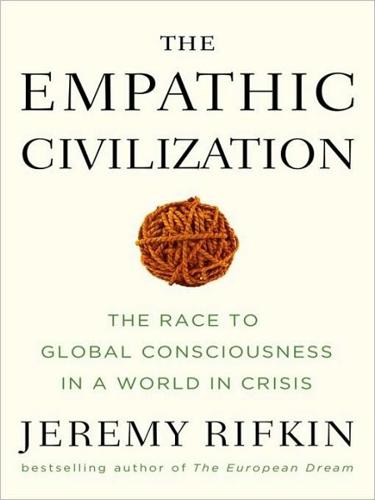
The Empathic Civilization: The Race to Global Consciousness in a World in Crisis
by
Jeremy Rifkin
Published 31 Dec 2009
Habitats became more permanent and with more dependable supplies of food, population increased. The first village settlements began to emerge in the Middle East, the Indus Valley, China, and elsewhere. In Chapter 1, we noted that neolithic life brought with it the pivotal invention of containers—pots, baskets, and bins—to store grain. With stored surplus, human beings created the possibility, for the first time, of planning ahead, establishing a bulwark against the vagaries of nature and gaining control over their environment. With surplus came economics, and the gnawing question that has plagued the human family ever since—who produces the surplus, who stores it, to whom is it distributed, and in what proportions.

Goliath: Life and Loathing in Greater Israel
by
Max Blumenthal
Published 27 Nov 2012
The disengagement signaled what Israel’s military-intelligence apparatus hoped would be the final break from Gaza. With the settlers out, the state could close the gates of Gaza once and for all, transforming the densely populated strip into a quarantined ghetto that military administrators could keep “on the brink of collapse,” and where surplus humanity would be indefinitely warehoused. With Gaza besieged from the outside, the Israeli military-intelligence apparatus saw its principal challenge as managing a Palestinian population the Israeli-American scholar Martin Kramer described as “economically superfluous young men.” Though the withdrawal of settlers required lucrative payoffs and violent police coercion, Israel received an infusion of thousands of Jews who could be resettled either in the hearts of mixed Jewish-Arab cities or in one of the mega-settlements that encircled East Jerusalem, shoring up the human wall severing the Palestinians of the West Bank from the city they had once dreamed of as their future capital.
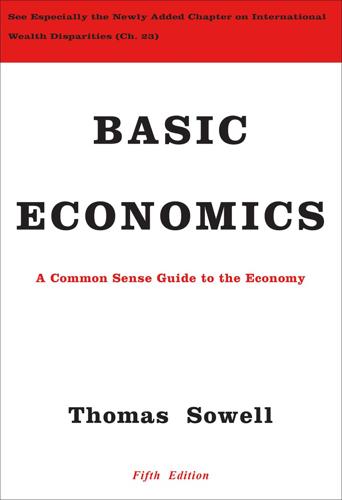
Basic Economics
by
Thomas Sowell
Published 1 Jan 2000
It would be comforting to believe that the government can simply decree higher pay for low-wage workers, without having to worry about unfortunate repercussions, but the preponderance of evidence indicates that labor is not exempt from the basic economic principle that artificially high prices cause surpluses. In the case of surplus human beings, that can be a special tragedy when they are already from low-income, unskilled, or minority backgrounds and urgently need to get on the job ladder, if they are to move up the ladder by acquiring experience and skills. Unemployment varies not only in its quantity as of a given time, it varies also in how long workers remain unemployed.
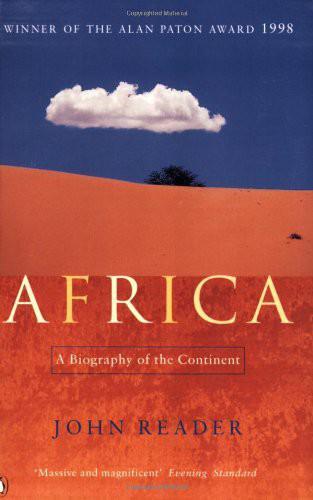
Africa: A Biography of the Continent
by
John Reader
Published 5 Nov 1998
Rainfall increased and became plentiful during the period up to about AD 1100, promoting the expansion of both local and long-distance trade networks.14 Population densities increased too – of both humans and livestock – and a conjunction of internal and external influences transformed the political structure of some ethnic groups from the age-set system which dispersed authority through the community to a system favouring centralized control and the formation of states. Long-distance trade was a primary influence in this transformation – most especially the export of commodities for which Africans had no use but which were in demand abroad, such as ivory, ‘surplus’ human beings, and gold. It is no accident that the development of the first indigenous African states coincides with the rising importance of gold as a medium of exchange in the economies of the Mediterranean and beyond. Furthermore, all five regions known to have been producing gold before the colonial period are also the regions in which the first notable indications of indigenous state formation occur in sub-Saharan Africa: Aksum on the northern Ethiopian plateau, ancient Ghana, Mali and Asante in West Africa, Zimbabwe in south-east Africa.